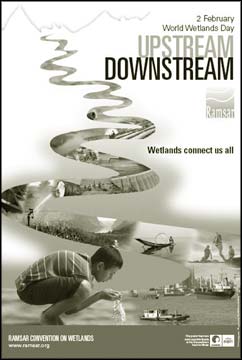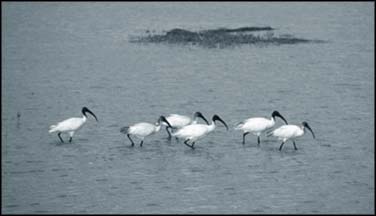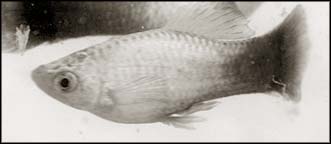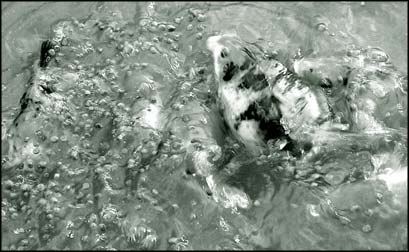Earth hope
Wetlands not wastelands
Guidelines for better conservation:
By Sajitha PREMATUNGE
The World Wetlands Day (WWD) falls on February 02. And the theme for
this year is `Upstream downstream wetlands connect us all.’
 wetland is an area of marsh, fen, peatland or water, whether
natural or artificial, permanent or temporary, with water that is static
or flowing, fresh, brackish or salt, including areas of marine water the
depth of which at low tide does not exceed six metres according to the
Ramsar Convention. wetland is an area of marsh, fen, peatland or water, whether
natural or artificial, permanent or temporary, with water that is static
or flowing, fresh, brackish or salt, including areas of marine water the
depth of which at low tide does not exceed six metres according to the
Ramsar Convention.
In short virtually anything that water is a part of can be termed as
a wetland. It is a very broad definition and includes everything from
coral reefs to manmade wetlands. Consequently, this includes a
considerable portion of the world’s land surface, making wetlands a
conservation priority.
However, this year’s main focus - river basins and their management -
has a direct link to Sri Lanka. Prof. Kotagama, Head of the Department
of Zoology, University of Colombo points out few factors - thus far
neglected - that should be incorporated into wetland conservation -
wetlands are dynamic entities; they cannot be conserved in isolation
since they are ingrained into a larger eco system; human intervention
for their management and finally the fact that they are directly linked
to human needs.
“All these elements have to come together for better Wetlands
Conservation and Management.” “A wetland is a point in succession. It is
an ecological phenomenon.” says Prof. Kotagama.
It is in the nature of a wetland to metamorphosis into a land eco
system. Compared to land eco systems wetlands change very fast. But as
Prof. Kotagama explains hands on conservation can alter this succession.
“Conservation is different from protection. If you want a wetland to
perform the same function and possess the same attributes ten years down
the line you have to intervene to stop it from changing.”
As Prof. Kotagama explains the only thing that can prevent a wetland
from metamorphosing is regular flooding. Otherwise it will be overtaken
by plants and eventually turn into a highland.
“Logging has been reported from the Bellanwila-Attidiya wetland. But
a wetland should not have trees in the first place. The wetlands nature
as well as its structure has to be conserved to stop the succession.” He
further explained that hands on conservation methods like taking out
invasive species and regular flooding has to be adhered to.
The protection of the adjoining land base is of utmost importance in
proper management of wetlands. He explained that - as this year’s theme
also indicates - wetlands cannot be conserved in isolation. The
activities conducted in the catchment area contribute to the functions
of the wetland.
“Take for example Muthurajawela. Today, sedimentation threatens the
very existence of the wetland.” Soil erosion has to be minimized to stop
the wetlands from filling up. “Lunugamwehera is acutely affected by
agricultural activities some five to six kms upstream.” And the flagship
species that qualified Bundala as a Ramsar site - flamingos - is now no
more. “What is the point of conserving Bundala as a Ramsar site if the
flagship species for which it was originally declared does not exist
there anymore?”
 A wetland has many values and functions such as water retention,
purification, food, etc... Any wetland appreciated today for certain
values and functions performed by it, will not remain so ten years down
the line and neither will its values and functions. A wetland has many values and functions such as water retention,
purification, food, etc... Any wetland appreciated today for certain
values and functions performed by it, will not remain so ten years down
the line and neither will its values and functions.
“Consequently if the objective of conservation is the exploitation of
such values and functions, we have to conserve it for this purpose.” But
the professor explained that we hardly appreciate the values and
functions of wetlands.
“In the 1990s Colombo faced severe floods. And the government had to
spend millions of rupees on the Metropolitan Environment Improvement
Programme, under which the whole canal system had to be redone. Cities
flood because of landfills.”
The popular belief is that wetlands are wastelands, a place to dump
garbage. This is due to the resilience of wetlands, explained Prof.
Kotagama. One of the main functions of a wetland is absorption of heavy
metals through plants. But there is a breaking point.
Going back the theme of this year’s WWD - Prof. Kotagama pointed out
that - understanding the interconnectivity of the relationship between
upstream and downstream is of significant importance for wetlands
management. “What happens upstream has a direct connection to what
happens downstream.”
As Prof. Kotagama explained this year’s theme is very much related to
Sri Lankan village life, since only people who make wetlands a part of
their lives can relate to the real value of wetlands.
We derive food from wetlands and they have a great aesthetic value
that Sri Lanka - being surrounded by wetlands - has failed to make use
of.
We are removed from the source of all these benefits because of our
supermarket culture that we have overlooked how important wetlands are
for our survival. If we do not adhere to more sound and hands on
management practices we are in danger of losing more and more of our
wetland extent.
**************
Values and functions of wetlands
* Wetlands have numerous values and functions that are beneficial to
humans. It’s one of the world’s most productive eco systems.
* Water retention - it operates as an effective flood control
mechanism and reduces soil erosion. It also replenishes the ground water
table.
* Water purification - it also holds off silt and purifies water of
heavy metals like chromium.
* Nutrient trapping - retains pollutants and sediment.
* Extractions - plant, animal or mineral (such as gems, sand, clay,
salt and coral).
* Energy source - electricity.
* Tourism and recreation.
* High biological diversity.
* Support many species - wetlands are also of immense scientific
value due to its high biodiversity.
Years of research pays off
by Harshini PERERA
  One’s pastime rarely becomes the profession of his/her, whereas
he/she could enjoy it to the fullest. Chinthaka Dassanayaka is the
luckiest person in this sense to be able to enjoy his profession and his
hobby simultaneously. One’s pastime rarely becomes the profession of his/her, whereas
he/she could enjoy it to the fullest. Chinthaka Dassanayaka is the
luckiest person in this sense to be able to enjoy his profession and his
hobby simultaneously.
He started breeding fish when he was seven years old as a hobby, but
a decade later it became his profession. He used to enjoy watching
colourful shoal of fish as they busily ran around his small tank.
Later, he invented a new variety of Platy as a result of years of
endeavour. His new variety of Platy was acclaimed at the “Min Visithuru
2008” conducted by the Ministry of Fisheries and Aquatic Resources.
Platy, scientifically known as Xiphophorus Maculatus, is a fish with
a two-year life expectancy and can be breed easily.
“My father had a tank of fish and it inspired me a lot. I started
breeding Platy in December 2004, meanwhile I did many experiments on a
new variety of Platy, through which I was capable of inventing the new
variety in 2008. There are 12 varieties of Platy. I mixed the colours of
Platy to come out with this special variety.” Chinthaka recalled how he
made discovery of the new variety which he named as “Chinthaka Variardus”.
 Chinthaka has received a training from National Youth Services
Council in Ornamental fish breeding. Further, He has been in a fish farm
called Golden Crocodile Farm, India for two years. Then, he has started
fish farming as a self-employment to keep his homefires burning. Chinthaka has received a training from National Youth Services
Council in Ornamental fish breeding. Further, He has been in a fish farm
called Golden Crocodile Farm, India for two years. Then, he has started
fish farming as a self-employment to keep his homefires burning.
This kind of Platy is not found elsewhere in the world. I have
already invented two more varieties which will be exhibited in Singapore
Aquarama International Competition this year which he has tirelessly
worked to achieve. Moreover, President Mahinda Rajapaksa’s helping hand
brought me thus far. The technology to breed some imported fish is not
known to many fish breeders in Sri Lanka.
But, he has been successful in breeding such fish as Catfish, Albino
Giant Gourami, Parku. The medium scale farm he possesses enables him to
provide knowledge to amateurs.
He delivers lectures in the Industrial Development Board, Ornamental
Fish Farm, Anuradhapura and Science and Technology Centre in Ambalantota.
His wife Indika Hettiarachchi and Kasun Danusha have been very helpful
in this endeavour. He even patent for this particular variety of fish
while he advises persons who is in want of advice to start an aquarium
to have overall knowledge on the field.
pic: Vipula Amarasinghe
Island species tend to be neglected
Legge’s Hawk Eagle reclassified as a distinct
species:
by Sajitha PREMATUNGE
The correct classification of a species is more important for
conservation of that particular species than one may think, since
conservation measures depend on the status of the species. In which case
the ramifications of an insufficiently clarified taxonomic status could
be just as worse as extinction.
 The Mountain Hawk Eagle is distributed in the Himalayas of Pakistan
to western China, Japan, Western Ghats of south-western India and the
hills of Sri Lanka. Since 1931 the Sri Lankan and Southern Indian taxon
Nisaetus kelaarti has remained a subspecies of the Mountain Hawk Eagle -
Nisaetus nipalensis. The Mountain Hawk Eagle is distributed in the Himalayas of Pakistan
to western China, Japan, Western Ghats of south-western India and the
hills of Sri Lanka. Since 1931 the Sri Lankan and Southern Indian taxon
Nisaetus kelaarti has remained a subspecies of the Mountain Hawk Eagle -
Nisaetus nipalensis.
However, when the first Mountain Hawk Eagle was discovered from Sri
Lanka in the 1800s none of the researchers saw the specimen. The
available specimens were discoloured and no distinctions could have been
made. Captain Legge did much research on this species in the 1970s.
He is the author of the best book ever written on Sri Lankan birds -
“History of Birds of Ceylon”, 1978 - and he named it N. kelaarti because
it was considerably different from its Indian cousin. However other
authors who researched on Indian and Sri Lankan avifauna reclassified it
as a subspecies of Mountain Hawk Eagle.
When specimen became more readily available it dawned on them that
this was, in fact, two different species. The Legge’s Hawk Eagle has a
relatively much larger bill and claws and short primary projection. It
also differs consistently in numerous plumage characters and other
mensural characters.
Its vocalizations differ distinctly and an earlier study found a
moderate degree of genetic differentiation. If structural features,
plumage colours, vocalizations, or DNA sequences, or some combination of
these factors vary in considerably between subspecies these species
could very well be identified as distinct.
In 2007 few European scientists who studied Eagles compared the DNA
of the species to find that the South Indian population is different
from the North. Norwegian scientists have also explored the possibility
of morphological differences between North Indian, South Indian and Sri
Lankan species. These differences coincide with their hunting methods,
habitat and habits.
“The South Indian population is strong with short claws and toes,
larger beak and short wings” says Deepal Warakagoda the Corresponding
author of “An overlooked threatened species of eagle: Legge’s Hawk Eagle
Nisaetus kelaarti” which officially identified Legge’s Hawk Eagle - in
honour of the first researcher who detected the differences between the
populations - as a distinct species.
“They are predators who prey on small mammals and their sedentary
life is depicted by short wings built for flying short distances through
the forest.” He explained that the openness of the North Indian habitat
has made the Northern Indian eagles develop longer wings.
“Their plumage is also considerably different.” He explained that in
addition to the criteria investigated, differences in vocalization has
also been taken into consideration in their study.
“The need for a split in a certain species arises out of global
environment concerns.” To prevent such taxonomic inconsistencies in the
future Deepal Warakagoda suggests that research should be more focused
on field observation. He emphasized that accuracy should be improved
through scientific observation.
“Museum studies and examination of related forms is a must.
Unfortunately Sri Lankan museums do not offer much opportunity of
comparison because they only contain local specimen.” Deepal Warakagoda
has studied vocalization patterns of the bird since 1989 and explained
that the study of vocalization and behavioral studies are of significant
importance to make further discoveries.
Deepal Warakagoda explained that this type of overlook affects the
global species diversity and richness. Subspecies are determined
according to geographical variation. “In a scenario where a largely
distributed species contain small island species, the island forms tend
to be neglected.”
In such cases a species split is required. Although there are other
species, in Sri Lanka, which can be reclassified, such as Sri Lanka
Black Bird, he explained that splitting or recognition of subspecies is
still very controversial. |

